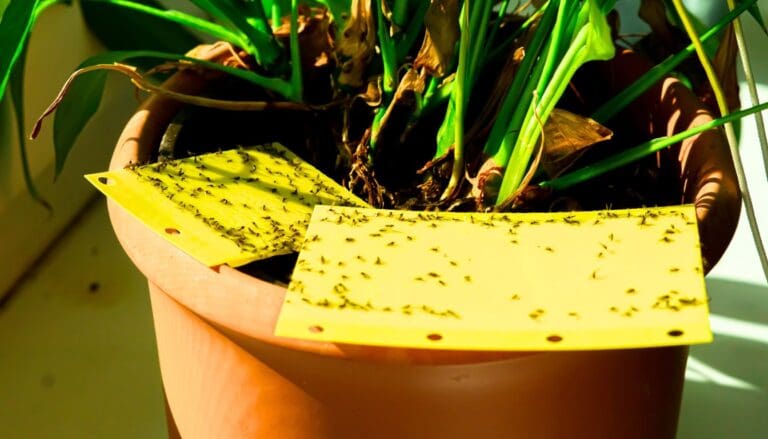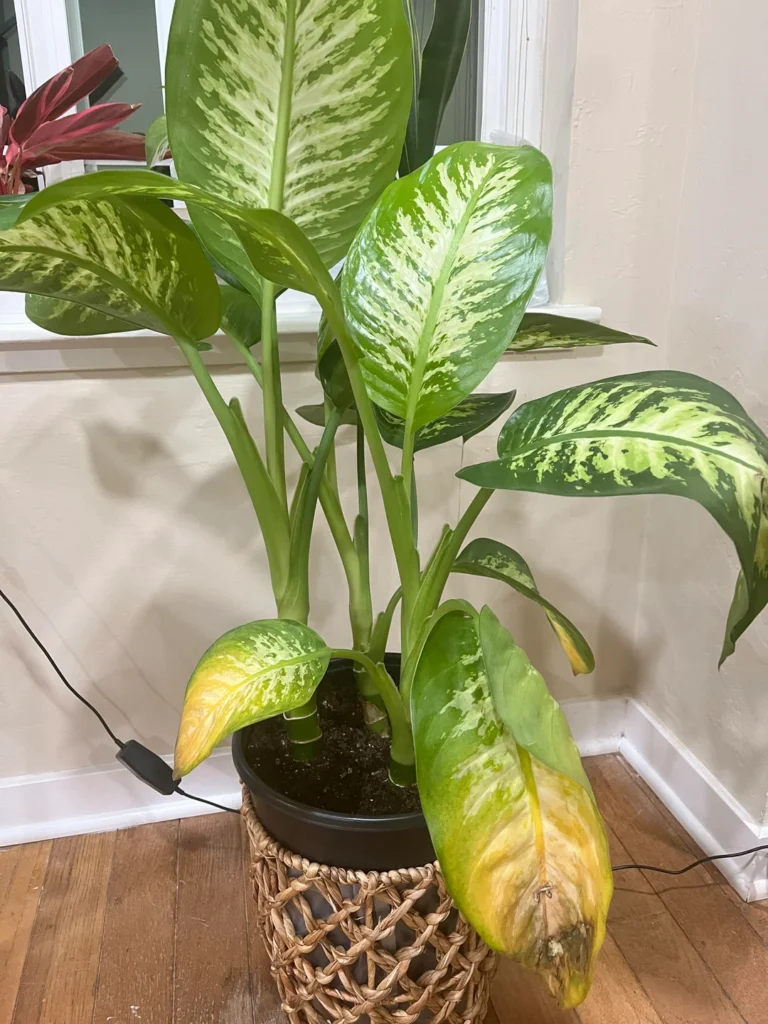4 Tricks to Use Grow Lights Without Ruining Your Decor
I love keeping plants indoors, but honestly, grow lights can really mess with the vibe of a room. Bright bulbs and those big, clunky fixtures just don’t always blend in.
But you don’t have to sacrifice your style to keep your plants healthy. There’s a way to have both—trust me.
I’ve figured out that it’s all about the setup. With a few simple tricks, you can give your plants what they need and still have a space that feels put together.
Please note: Simplify Plants is reader-supported. As an Amazon Associate, I earn from qualifying purchases made by our readers with no extra cost added to you all! Some links in the post are affiliate links and I get a commission from purchases made through links in the post.
1) Use slim LED grow light panels to blend with shelves

I really like slim LED grow light panels because they’re low profile and don’t hog space. Their flat shape means I can hide them under or above shelves, and they don’t stick out like a sore thumb.
Most of these panels come in neutral colors, so they don’t scream for attention. I just line them up with my shelves, and honestly, they almost disappear.
The fact that they’re lightweight is a bonus. I can stick them on with clips, brackets, or even those trusty adhesive strips—moving them around is a breeze.
Since they spread light evenly, I don’t need those big, awkward lamps cluttering things up. My shelves stay tidy, and my plants are happy.
For me, slim panels are a no-brainer if you want both function and style. My plants get their light, and my room still looks good.
2) Choose grow lights with adjustable color temperature

I’m a fan of grow lights with adjustable color temperature—they give me options. Some plants want cooler light, others do better with something warmer, and it’s nice to be able to switch things up.
If I set the lights to a warm tone, they blend in with my regular lamps, making the whole place feel cozy. If I’m after stronger growth, I just dial up a cooler setting.
Adjustable lights are great in rooms that do double-duty. During the day, I keep things bright and cool for my plants, then in the evening, I shift to a softer glow for a chill vibe.
I also like that I’m not stuck with one style. If I change up my decor, I can tweak the color to match. That kind of flexibility is hard to beat.
3) Hide grow lights behind decorative plants or curtains
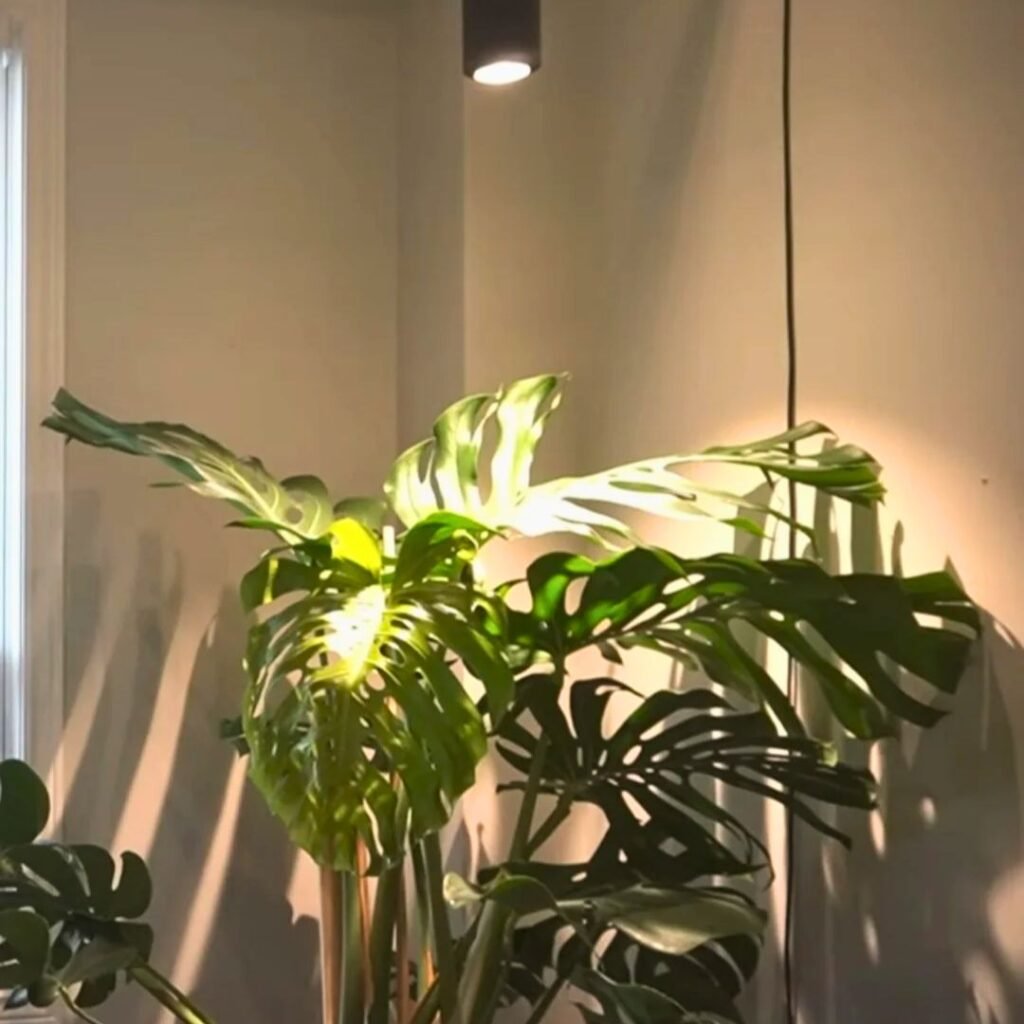
Sometimes I’ll tuck grow lights behind tall plants to soften the glow and make everything look more natural. The light does its thing, but it doesn’t take over the room.
Another trick? Hang a thin curtain in front of the lights. A sheer or light-colored curtain hides the fixture, but enough light still gets through for the plants.
I’ve also played around with layering plants—big ones in the back, smaller ones up front. It hides the equipment and keeps things looking balanced.
If I’m after a cleaner look, I’ll stash the lights behind furniture or shelves with plants on top. The glow is less direct, and the greenery stays front and center.
4) Mount grow lights inside stylish pendant fixtures
Using pendant fixtures to hide grow lights is one of my favorite hacks. They look like regular lights, but my plants get what they need behind the scenes.
When I put a grow light inside a pendant, I make sure the shade is deep enough to hide the bulb. No harsh glare, no weird spotlight effect.
I pick pendants that fit my style—metal for a modern look, glass or woven for something warmer. The fixture actually becomes part of the decor, not just a plant thing.
Hanging them at the right height is key. Too low feels crowded, too high and my plants don’t get enough light. It’s a bit of trial and error, honestly.
I’ve noticed guests usually don’t even realize the lights are for plants until I point it out. That’s a win in my book.
5) Opt for grow lights with sleek black or white finishes
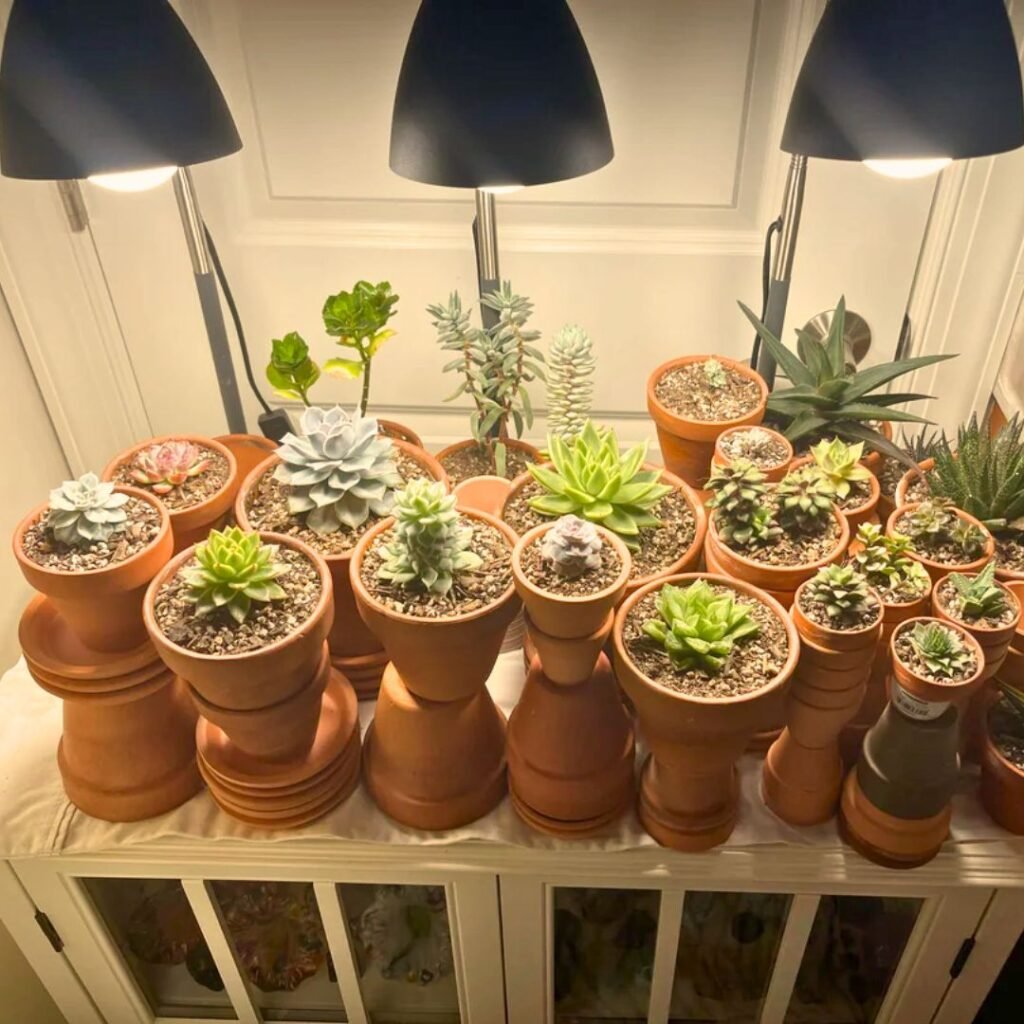
I go for black or white grow lights because they blend in so much better. Black works with darker furniture or modern setups, while white is perfect for bright, minimal spaces.
The finish makes a difference. A black light feels clean and understated, and a white one keeps things airy.
I’ve found these finishes make the lights look like regular lamps, so I don’t mind having them in my living room or bedroom.
Matching the finish to my style keeps everything looking neat and my plants happy.
6) Incorporate grow lights into existing ceiling track lighting
Ceiling track lighting is a sneaky way to add grow lights without changing the room’s look. I just swap out a few bulbs for grow light bulbs and point them at my plants.
It’s easy to adjust the direction—just aim the grow lights at the plants and the rest at the walls or art. The light feels like it belongs there.
Grow bulbs come in all shapes and sizes. Some look just like regular bulbs, so nobody really notices. The track lighting stays consistent, and my plants get what they need.
Mixing regular bulbs and grow bulbs on the same track lets me control the brightness without overdoing it.
If I want a softer look, I use bulbs with a warm white tone. It’s easier on the eyes and still helps my plants grow.
7) Use smart plugs to schedule grow lights discreetly
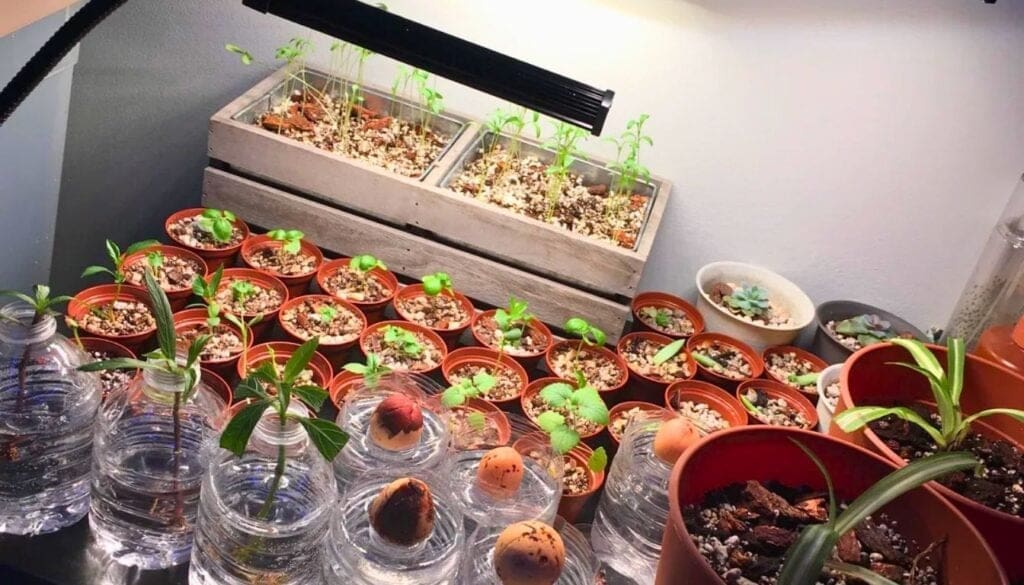
Smart plugs are a game changer for me. I can set my grow lights to turn on and off automatically, so I’m not constantly flipping switches.
Having a schedule keeps the lights running only when needed. The space stays natural, and I’m not wasting energy.
Adjusting the timing from my phone is super convenient. No extra switches or timers cluttering up my room, which I appreciate.
If I want to keep things hidden, I just tuck the smart plug out of sight. The tech does its thing quietly, and my room stays looking good.
8) Place grow lights inside decorative lanterns
I love hiding grow lights inside decorative lanterns. The lanterns make the light feel like part of the decor, not just some plant gadget.
Lanterns with glass panels or open sides work best. The light reaches the plants, but the lantern softens the look.
There are so many styles—metal, wood, painted—so I can always find one that fits my room. It feels more intentional, less “plant setup.”
I always check for good airflow so things don’t get too hot. And I keep the lantern close enough for the plants to soak up the light.
It’s a simple trick that keeps my plants happy and my space looking tidy. The lantern hides the bulb, not the glow.
9) Select grow lights with minimal heat output
I always look for grow lights that stay cool. High heat can make a room uncomfortable or even mess with my furniture, so I avoid it when I can.
LED grow lights are my go-to—they use less energy and barely get warm. That means I can put them close to my plants without worrying.
Cooler lights don’t mess with the room’s temperature, so I’m not fiddling with the thermostat or dragging in extra fans.
When I’m shopping, I check for low heat output and energy efficiency. It just makes life easier and keeps everything safe.
Choosing lights that don’t get hot keeps my plants and decor in good shape. Why make things harder than they need to be?
10) Install grow lights behind frosted glass panels
I’m a big fan of frosted glass panels for hiding grow lights. The glass softens the brightness, so the light isn’t harsh or out of place.
When I put lights behind frosted glass, they blend right in. The panels look like part of the design, not just a cover-up.
It also cuts down on glare. My plants still get the light they need, but the room doesn’t feel like a lab.
I’ve used frosted glass in cabinets, shelves, and even wall panels. It makes the lighting look intentional, which I love.
The key is picking panels that fit your room’s style. Clear frosted, patterned, or tinted—they all work, depending on the vibe you want.
This setup keeps my plants healthy and my space looking sharp. Win-win.
Understanding Grow Light Aesthetics
I want my plants to thrive, but I also care about the look of my space. The type of light I pick and how it affects the room really matters.
How Grow Lights Impact Room Ambience
Grow lights aren’t just for plants—they totally change the feel of a room. Brightness, color, and placement can either blend in or stick out like crazy.
If I use a harsh spotlight, the space can feel cold. A softer glow, though, makes things warmer and more welcoming.
Bulb shape and fixture style matter too. A sleek lamp or pendant can look like it belongs, but a bulky clamp light? Not so much.
Placing lights near natural decor—wood, plants, whatever—helps them feel intentional.
To avoid that sterile, clinical look, I keep lights at a comfy brightness. Dimmers or timers help the light shift naturally, so the room feels balanced, not overdone.
Choosing the Right Light Temperature
The color temperature of a grow light really shapes both plant growth and the overall vibe of the room. Warm light (about 2700K–3000K) gives off that cozy, yellowish glow we all know.
Cool light (think 5000K–6500K) is much brighter, almost like daylight. I tend to reach for warm light in living areas when I want things to feel relaxed and inviting.
But in kitchens or workspaces? Cool light just makes everything look cleaner, and honestly, it’s easier to see what I’m doing. Matching the light temperature to a room’s purpose keeps things from feeling off.
Here’s a quick guide:
| Light Temperature | Look & Feel | Best For |
|---|---|---|
| 2700K–3000K | Warm, soft | Living rooms, bedrooms |
| 3500K–4100K | Neutral, balanced | Dining areas, mixed spaces |
| 5000K–6500K | Bright, crisp | Kitchens, offices, plant corners |
Creative Integration Tips
I try to make my grow lights look intentional—like they belong there. Picking designs that match my style and keeping cords tidy just helps the whole setup blend in.
Small tweaks, like the fixture style or where I run the wires, can make a big difference.
Blending Grow Lights With Existing Decor
I basically treat my grow lights like any other lamp or accent light. If I go for a fixture in wood, matte black, or brass, it lines up with my furniture and doesn’t stick out.
Placing lights near shelves or existing lamps helps, too. A grow bulb in a floor lamp beside the couch? It looks natural and still gives my plants what they need.
Color temperature is key here. In living rooms, I stick to warm white bulbs so the light feels inviting, not harsh.
For workspaces, I’ll swap in a cooler light to keep things bright and crisp. If I want the fixture to stand out, I’ll pick a pendant light or wall sconce that holds a grow bulb, so it doubles as decor.
Disguising Cords and Fixtures
Cords can get messy fast, so I usually run them along the wall or baseboard with cord covers—and I’ll paint them to match if I’m feeling particular.
Plugging lights into outlets behind furniture helps keep things hidden. For hanging fixtures, I use ceiling hooks and clips to guide cords neatly instead of letting them dangle everywhere.
Grouping plants together means I need fewer lights and cords, which just looks tidier.
If space is tight, I’m a fan of clip-on grow lights that attach right to shelves or tables. They’re compact, and I don’t have to worry about extra stands or wires showing.
Frequently Asked Questions
I like using grow lights in ways that look good and still help my plants. Small design choices—like the style and placement of the lights—make a surprising difference in how everything fits together.
How can I integrate grow lights into my home without affecting the style?
I use slim LED panels that blend in with my shelves or bookcases. They’re pretty much invisible and keep the room tidy.
What types of decorative grow lights are available?
There are pendant-style fixtures, wall-mounted lights, and even lamps that double as decor. I like these when I want the light to look like it belongs.
Are there any hidden grow light options that won’t disrupt my decor?
Absolutely. Sometimes I’ll tuck lights behind plants, curtains, or furniture so the glow hits the plants but the fixture stays out of sight.
Can grow lights be used effectively with indoor plants in a design-friendly way?
I’ve found that adjustable color temperature lights are a game-changer. I can switch between warm and cool tones depending on the time of day or mood, and it doesn’t mess with my room’s look.
What are some creative ways to display plants with grow lights?
I love putting plants on floating shelves with lights mounted underneath.
Another idea: group plants under a stylish hanging light that doubles as decor. Why not make it fun?
How do I choose the right grow light that complements my interior design?
I usually go for sleek finishes like black or white—they just seem to blend in with most furniture, you know?
I also pay attention to the shape of the fixture to make sure it fits the vibe of my room.
Recommended Garden Supplies
| Product Image | Our Recommended Gardening Supplies | Check Offers! |
|---|---|---|
Top Top
Top
Top
Top
Top
Top
Top
Top | rePotme Houseplant and Tropical Classic Potting Soil Mix | Check Offer On Amazon |
 Top
Top
Top
Top
Top
Top
Top
Top | Espoma Organic Indoor Plant Food | Check Offer On Amazon |
 Top
Top
Top
Top
Top
Top
Top
Top | GooingTop LED Grow Light 6000K Full Spectrum Clip Plant Growing Lamp | Check Offer On Amazon |
 Top
Top
Top
Top
Top
Top
Top
Top | Soil Moisture Meter | Check Offer On Amazon |
 Top
Top
Top
Top
Top
Top
Top
Top | Govee Hygrometer Thermometer, Bluetooth Enabled! | Check Offer On Amazon |
 Top
Top | LEVOIT Humidifiers for Large Room(Best For Plants) | Check Offer On Amazon |
 Top
Top
Top
Top
Top
Top
Top
Top | Upgraded DIY Automatic Drip Irrigation Kit, 15 Potted Houseplants Support | Check Offer On Amazon |
 Top
Top
Top
Top
Top
Top
Top
Top | Stainless Steel Heavy Duty Gardening Tool Set | Check Offer On Amazon |
 Top
Top
Top
Top
Top
Top
Top
Top | Bonide Insecticidal Soap | Check Offer On Amazon |
 Top
Top
Top
Top
Top
Top
Top
Top | Bonide 32 oz Spray Neem Oil for Organic Gardening | Check Offer On Amazon |
 Top
Top
Top
Top
Top
Top
Top
Top | Garden Safe Fungicide | Check Offer On Amazon |



